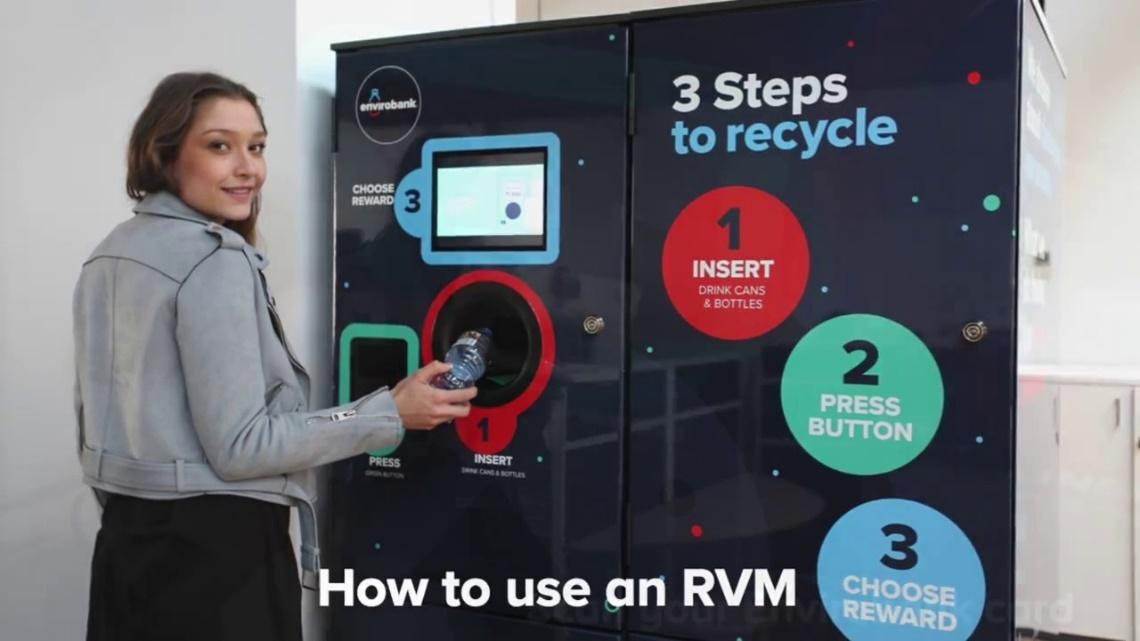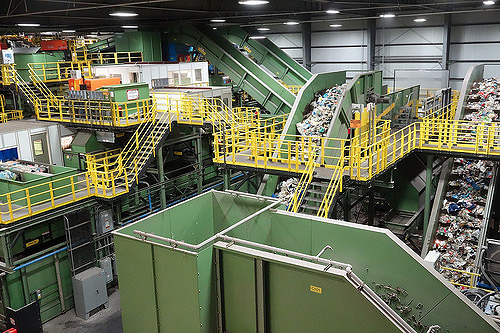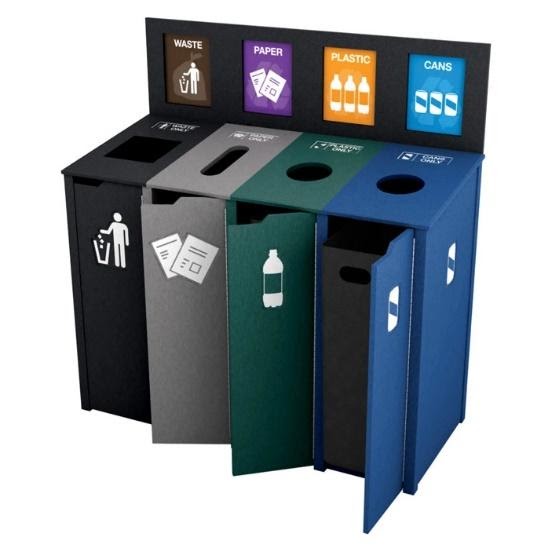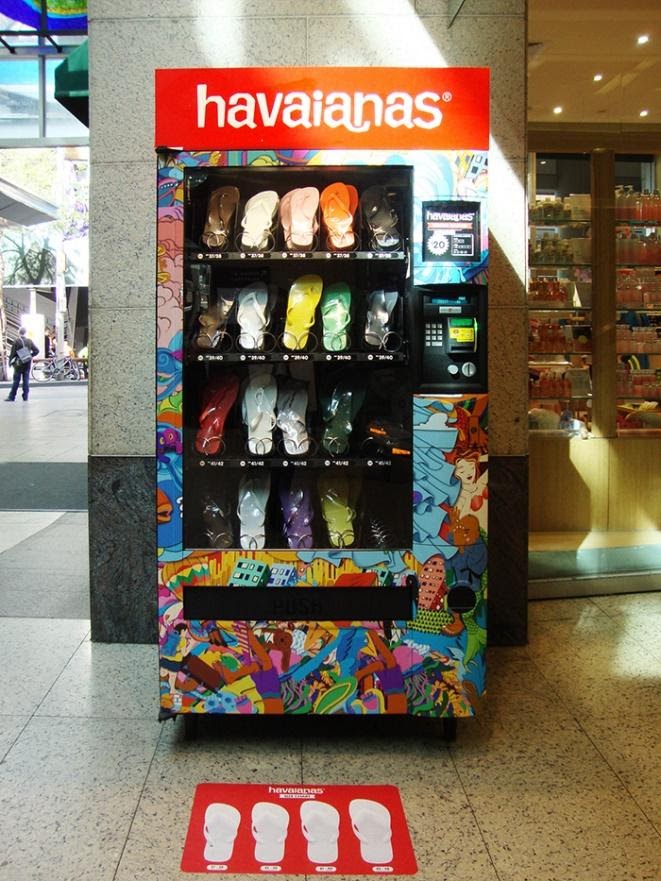Abstract
The reverse vending machine offers an alternative way to recycle bottled containers in an efficient, convenient, and incentivizing way. This mechanism is easy to manage, conveniently placed, efficient, and resourceful at recycling. Due to its simplistic process and positive intention of helping the environment, the reverse vending machine is becoming popularized worldwide.
What Are Reverse Vending Machines?
The reverse vending machine (RVM) is a device that takes empty and used bottles or cans, then returns money or other forms of incentivization to the recycler, depending on the quantity of receptacles recycled. This device was invented by the Swedish company Wicanders in the late 1950s [1]. Though it was functional, it was very simplistic and one-dimensional – accepting only plastic bottles, one at a time. The machine could not accept other recycled materials such as aluminum or glass, nor could it accept large quantities of bottles. To upgrade this device, in 1962, engineer Aage Tveitan created an advanced reverse vending machine [1]. The device could then accept bottles made out of different recyclable material and multiple bottles at once [1]. This upgrade laid the foundation for how our machines function today.
 Plastic bottles and containers at the landfill in Thilafushi, Maldives [2]
Plastic bottles and containers at the landfill in Thilafushi, Maldives [2]
Why Should We Use Them?
Because consumers use over 1.4 trillion beverage containers every year worldwide [3], the reverse vending machine’s purpose is to help reduce and recycle this waste. Most unrecycled beverage bottles are scattered across landscapes, landfills, oceans and rivers. To combat this waste, the RVM offers incentives for recycling. These incentives include cash refunds, donations to charity, metro transit tickets, paid telephone cards, or discount tickets to amusement parks, depending on the location of the machine [4]. Due to these incentives, users are likely more motivated to recycle since it not only benefits the environment but themselves as well.

A Reverse Vending Machine [5]
How Do They Work?
The reverse vending machine operates through a series of steps. First, the recycler places empty beverage containers into the receiving hole [6]. Then, the bottle or can is rotated so that the Universal Product Code (UPC) scanner can scan the bottle’s UPC code. This numeric code is assigned to each unique trade item to identify where it was manufactured [6]. After the container is scanned and identified, it is processed into the database to keep track of how many bottles the recycler is turning in [6]. The beverage containers are then crushed to a smaller size so that there is more storage capacity in the reverse vending machine [6]. Recyclers then have the option to choose what reward they want [6]. Finally, once the storage capacity is full, the beverage containers are collected and sorted by hand to ensure that they are brought back to their respective recycling material company [6].
Environmental and Economic Advantages
There are several advantages of using reverse vending machines. One benefit is that they help the environment by recycling material and reducing the need for raw materials to make new beverage containers [7]. RVMs also are conveniently placed in public locations such as grocery stores, gas stations, schools, parks, etc., which make them easily accessible for users [8]. They are easy to manage since the machine separates the recyclable materials (plastic, glass, aluminum) rather than having it manually done. Furthermore, RVMs also have a capacity of 200 plastic beverage containers and 900 cans, which means these machines can hold a lot of material before needing to be emptied [4]. Although they can hold a lot of recyclable materials, they are not huge machines, so they do not take up a lot of space. Furthermore, RVMs can benefit businesses. Stores with RVMs can offer store-specific incentives (i.e. coupons) so that customers who enjoy recycling through the RVM will come back regularly to recycle and shop. Lastly, since RVMs are incentivized devices, not only is the environment benefitting, but the recycler is as well.
Economic Limitations
The disadvantage of these machines is that they have relatively high initial costs for purchase or leasing arrangements. One machine can cost between $10,000 and $25,000 [9]. Because of the high expense, it is difficult for businesses to buy many RVMs. However, a similarly priced device also found in convenient locations is the automated teller machine (ATM). Though they can be bought or leased for slightly cheaper, ATMs range from $1,000 to $25,000 or more, and they are profitable in the long-term [10]. ATMs can earn on average between $4,320 and $7,200 a year if they charge $2.50 or $3 per use [11]. Between one to four years from the initial purchase or lease agreement, the ATM machine begins to earn profits from the initial purchase/lease agreement. RVMs have the potential to be as profitable as ATMs. If an RVM can collect one thousand cans per week, at 10 cents per can, then it can earn $100 a week, which would be $5,200 a year [12]. Within two to five years, these machines would make a profit from their initial costs. Not only are RVMs environmentally beneficial, they are economical too.

Sims Municipal Recycling Center in New York City [13]

Quadruple Recycling Station [14]
Reverse Vending Machine vs. Regular Recycling
Although the main goal of recycling bins, recycling centers, and RVMs is to recycle, each appliance functions differently. RVMs accept only beverage containers, while bins and centers can accept any recyclable materials. RVMs are (mostly) mechanically separated, whereas bins and centers are manually separated. The issue with manual separation is that materials are often improperly separated, or trash is thrown in with the materials. RVMs will only process clean and empty bottles/cans. However, there is a convenience with manual separation: it is quicker to throw away materials than to wait and process materials into RVMs. On the other hand, RVMs and recycling centers are incentivized, whereas bins are not. Lastly, both RVMs and recycling bins are located in convenient areas (supermarkets, schools, etc.), but recycling centers are found sparingly in cities/towns because they take up a lot of space. Though these three appliances function differently, the material they collect end up in the hands of the same recycling companies, so it is worthwhile to examine the benefits of both.
Machines Around the World
The global market for reverse vending machines is expanding significantly because of the increase in innovation and development of resource recycling projects. Reverse vending machines can be found in North America, South America, Europe, Asia-Pacific, the Middle East, and Africa [15]. As of 2020, the global market for reverse vending machines is valued at $386.9 million [16]. By 2026, the market is expected to increase to $779.3 million – a compound annual growth rate of 10.4% [16]. According to Transparency, a market research platform, RVMs are dominating in the North American market due to a stable demand for RVMs from government, retailer, and beverage industries [15]. In the Asian Pacific market, they’re expected to expand significantly due to the growing food industry [15].

A Vending Machine Selling Flip Flops [17]
With the expansion of RVMs worldwide, there may even be new applications of this invention. For example, the RVM could adapt to collect new materials such as compost and textiles, or add new incentives. With these adaptations, RVMs can recycle and reduce material beyond water bottles and motivate users to recycle more. Though the RVM may not have a huge impact on revolutionizing the process of recycling, utilizing the RVM does take a step in the right direction for the environment and minimisation of human impact. With the expansion of RVMs into more countries, convenience stores, and public areas, hopefully recyclable materials will be recycled at a more significant rate, reused indefinitely, and RVMs can reduce waste drastically.
Sources
[1] Reversevending, “The History of Reverse Vending 1920 to 2014,” WordPress, September 16, 2013. Available: https://www.google.com/amp/s/reversevending.wordpress.com/2013/09/16/the-history-of-reverse-vending-1920-to-2013/amp/ [Accessed: February 5, 2020]
[2] Joe Ilez, “5 Innovations that Could End Plastic Waste,” Greenbiz, March 15, 2018. Available: https://www.greenbiz.com/article/5-innovations-could-end-plastic-waste [Accessed: April 30, 2020]
[3] TOMRA, “REVERSE VENDING MACHINES FOR COLLECTING DRINK CONTAINERS FOR RECYCLING,” TOMRA. [Online]. Available: https://www.tomra.com/en/collection/reverse-vending [Accessed: January 27, 2020]
[4] Jan Dell and Marcus Eriksen, “How to Close the Loop on a Quarter-trillion Plastic Bottles a Year,” Greenbiz, November 8, 2018. Available: https://www.greenbiz.com/article/how-close-loop-quarter-trillion-plastic-bottles-year [Accessed: January 27, 2020]
[5] Envirobank Recycling, “How to Use a Reverse Vending Machine,” Envirobank, July 31, 2017. Available: https://www.youtube.com/watch?v=q8FLTHrwAAU [Accessed: January 30, 2020]
[6] S. Graushcopf, “UPC Codes: What They Are and How They Work,” the balance everyday, January 16, 2018. Available: https://www.thebalanceeveryday.com/upc-codes-what-they-are-and-how-they-work-897077 [Accessed: February 5, 2019]
[7] TOMRA, “Reverse Vending 101: A beginner’s guide,” Tomra, August 15, 2017. Available: https://newsroom.tomra.com/reverse-vending-101-a-beginners-guide/ [Accessed: January 27, 2020]
[8] W. Gabriel, “There’s a Vending Machine for That,” Recycle Nation, 2020. Available: https://recyclenation.com/2017/04/theres-a-vending-machine-for-that/ [Accessed: January 27, 2020]
[9] N. Wu, “Reverse Vending Machines Arrive on Oahu,” Pacific Business News, November 28, 2004. [Online]. Available: https://www.bizjournals.com/pacific/stories/2004/11/29/focus3.html [Accessed: January 27, 2020]
[10] CostOwl.com, “How Much Does an ATM Cost?” CostOwl.com. Available: https://www.costowl.com/b2b/atm-machine-cost.html [Accessed: April 28, 2020]
[11] ATMDepot.com, “How to Build a Wealthy Income ATM Business,” ATMDepot.com. Available: https://www.atmdepot.com/resources/how-atm-machines-work/how-to-make-money-with-atm-machines/ [Accessed: April 28, 2020]
[12] Laurie Blank, “How to Make $100/Week Recycling Aluminum Cans,” Well Kept Wallet, March 3, 2019. Available: https://wellkeptwallet.com/making-money-recycling-aluminum-cans/ [Accessed: April 26, 2020]
[13] Urban Green, “Sims Municipal Recycling Center Tour,” Urban Green. Available: https://www.urbangreencouncil.org/content/events/sims-municipal-recycling-center-tour [Accessed: April 25, 2020]
[14] Recycling Away, “The Chesterfield Quadruple Recycling Station,” Recycling Away. Available: https://www.recycleaway.com/The-Chesterfield-Quadruple-Recycling-Station_p_922.html [Accessed: May 1, 2020]
[15] Transparency, “Reverse Vending Machine Market – Global Industry Analysis, Size, Growth, Trends, and Forecast 2017 – 2025,” Transparency. Available: https://www.transparencymarketresearch.com/reverse-vending-machine-market.html [Accessed: April 23, 2020]
[16] MarketWatch, “Reverse Vending Machine Market 2020 With Top Countries Data: Market Size, Global Trends, Development Status, Opportunities, Future Plans, Competitive Landscape and Growth by Forecast 2026,” MarketWatch, February 3, 2020. Available: https://www.marketwatch.com/press-release/reverse-vending-machine-market-2020-with-top-countries-data-market-size-global-trends-development-status-opportunities-future-plans-competitive-landscape-and-growth-by-forecast-2026-2020-02-03 [Accessed: April 25, 2020]
[17] Pretend, “The Charm of Japan’s Vending Machine,” Pretend Magazine, July 17, 2019. Available: https://pre-tend.com/the-charm-of-japans-vending-machines/ [Accessed: May 1, 2020]




